Juan of Austria. Finest hour of the battle of Lepanto and the inglorious death of the "last knight of Europe"
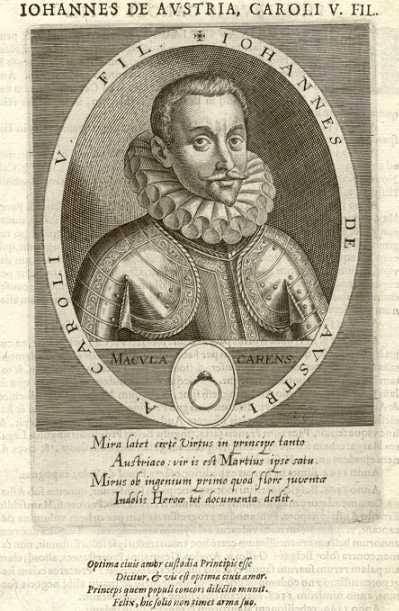
In the previous article - Juan of Austria. The famous bastard of the Spanish Habsburgs, we talked about the youth of this prince - the illegitimate son of the Holy Roman Emperor Charles V, and the beginning of his military service. This story ended with a report on the attack of the Ottoman Empire on Crete and the creation of the Holy League, as well as on the size and composition of the fleets of the warring parties, their commanders.
On October 7, 1571, the ships of the Ottomans and the League met in the Gulf of Patras in a grand battle near Lepanto, which was the last major battle of the rowing era. fleet and one of the four largest naval battles in the world stories.
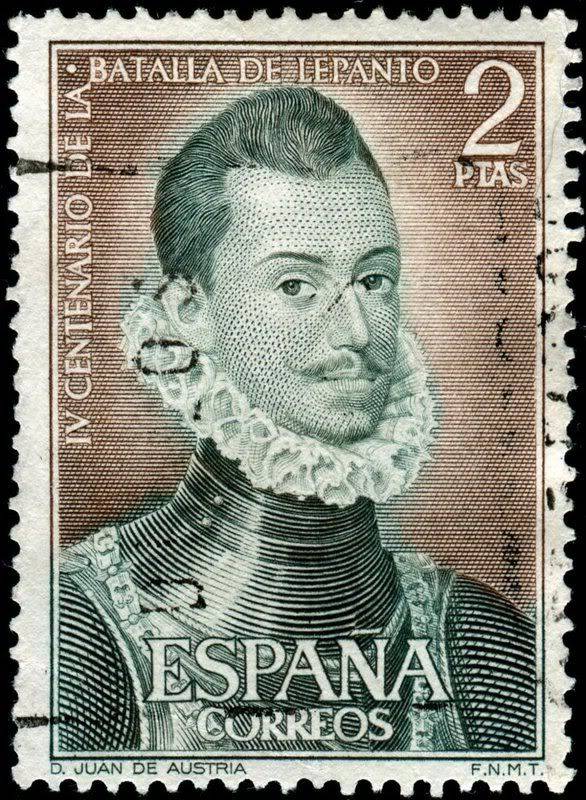
Don Juan of Austria on a Spanish postage stamp commemorating the 400th anniversary of the victory at Lepanto
The Battle of Lepanto
The fleet of the Holy League left the harbor of Messina on September 16, 1571. Each ship carried a piece of the True Cross sent by the pope, and each ship was blessed by the papal nuncio. The flagship galley ("Real") of Juan of Austria was under the banner of the patroness of the American colonies of Spain - the Blessed Virgin of Guadalupe.
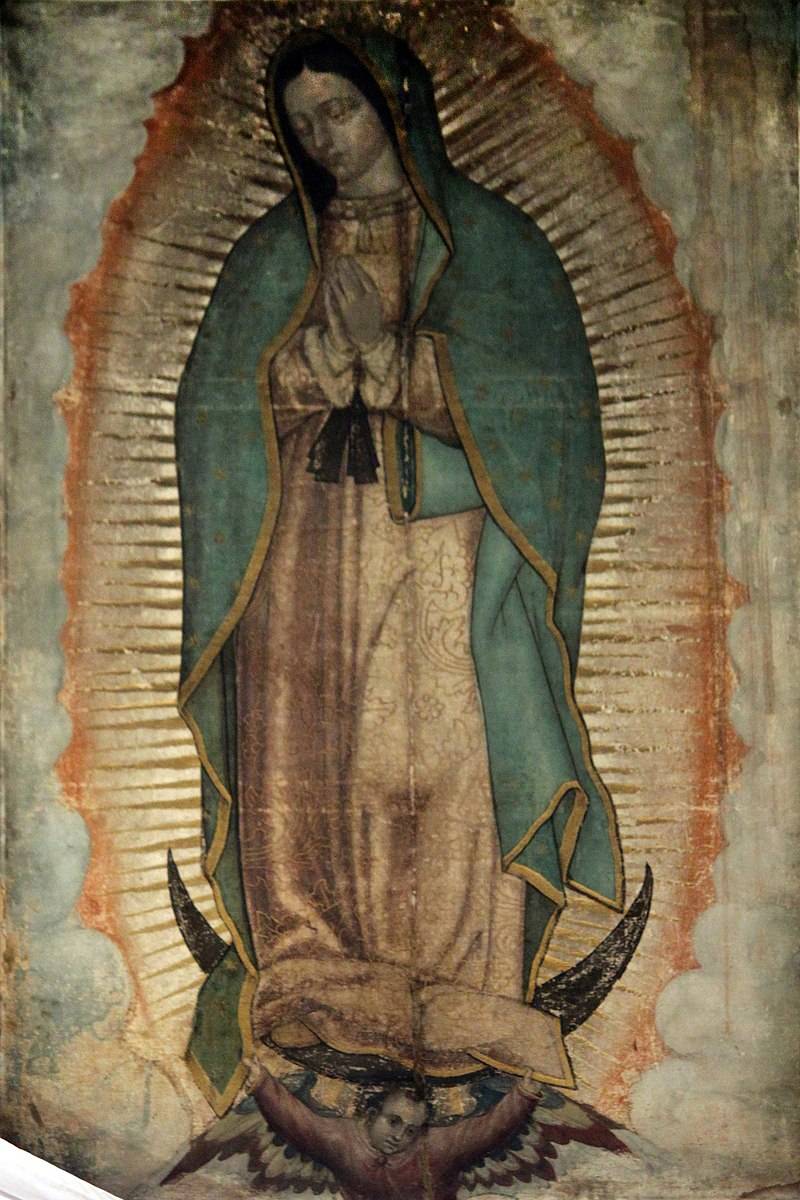
Nuestra Senora de Guadalupe, considered miraculous, from the Basilica of Our Lady of Guadalupe, Mexico City. The Virgin Mary is represented here by a beautiful girl of Indian origin.
And on the flagship of the Ottomans was the green banner of the Prophet, personally presented to Ali Pasha by Selim II.
Having reached the coast of Epirus by September 30, the Christian fleet settled in the bay of Gomenice. From here, one of the galleys was sent for reconnaissance to Cyprus, which brought the news of the fall of Famagusta. After that, the allied fleet entered the Gulf of Patras, where on the morning of October 7 one of the largest naval battles in history took place, named after the city of Lepanto, located 30 miles from the battlefield. Historians often refer to the Battle of Lepanto as the last major battle of the rowing fleet era. European sailors were the first to see the masts of the Turkish ships, and the fleet of the Holy League began to line up for battle.
On the left flank of the allies were 63 ships, led by the Venetian admiral Agostino Barbarigo.
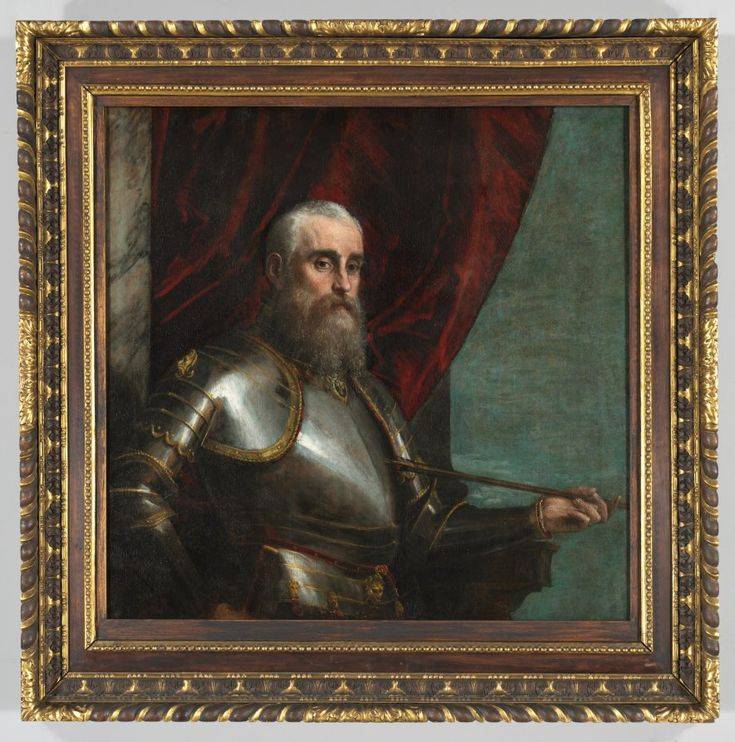
Agostino Barbarigo, portrait of a student of Veronese
His opponent was Mohammed Sirocco, who led 53 galleys and three galliots into battle.
The right flank of the Holy League fleet (64 galleys) was taken under the command of Giovanni Doria. He got the most formidable opponent - Uludzh-Ali, the beylerbey of Algeria. It was here that the ships of the Barbary corsairs were located - 61 galleys and three galliots.
Don Juan took up a position in the center, with 37 warships at his disposal. Here were the largest and most powerful ships of the Venetians, commanded by Venier, as well as the galley of Alexander Farnese, whom we know. 25 reserve ships followed.
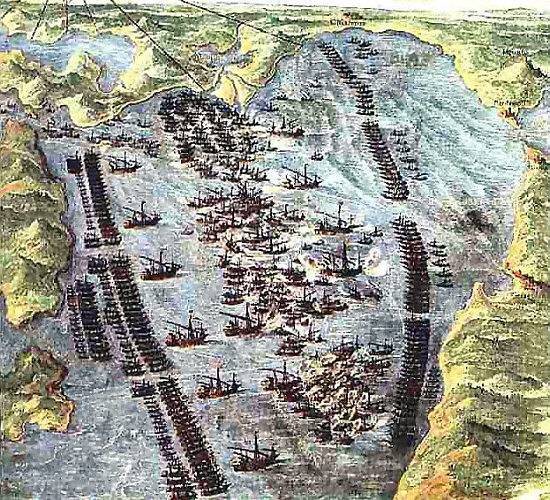
Fernando Bertelli. “The Battle of Lepanto”, fresco at the Vatican Gallery of Maps, 1572
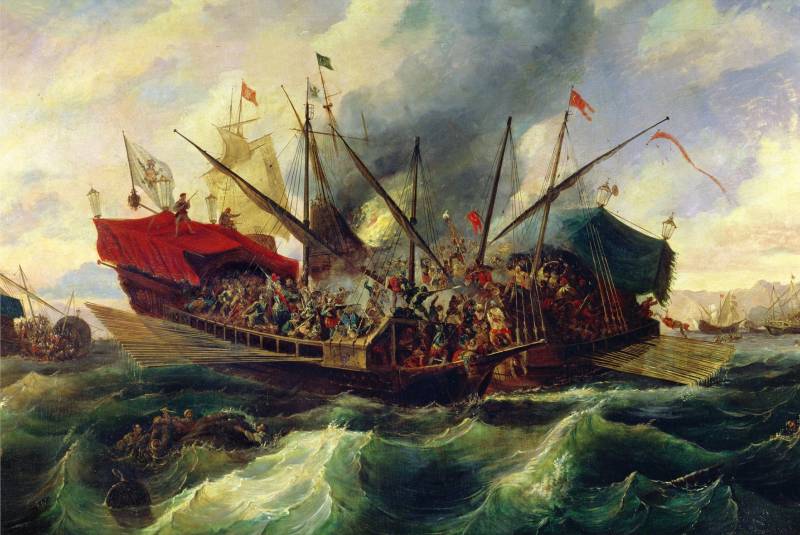
Antonio Brugada. “The naval battle of Lepanto between the Holy League and the Turks in 1571”, Museu Maritim de Barcelona
The battle was started by 6 large Venetian galleasses, which, using the advantage in artillery, upset the battle formations of the Ottomans with cannon fire. Ottoman admiral Ali Pasha Muezzinzade gave the order to move forward, hoping to achieve success in boarding battles. A striking episode of this battle was the battle of two flagships - the large galleys "Real" and "Sultana", on which were the commanders of the fleets - the excellent archer Ali Pasha and the "sword master" Juan of Austria. The character of Juan can be judged from the following episode: in anticipation of a collision with an enemy flagship, he danced a galliard on the gun platform of his ship.
Replica of the flagship galley "Real", Maritime Museum, Barcelona:
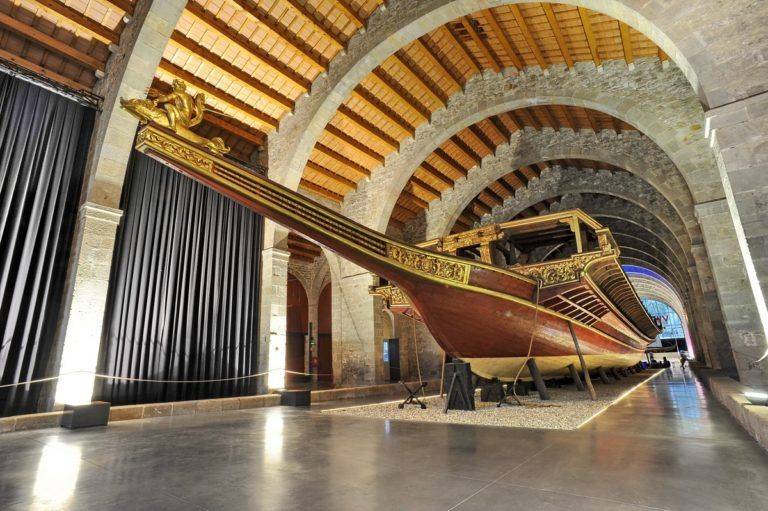
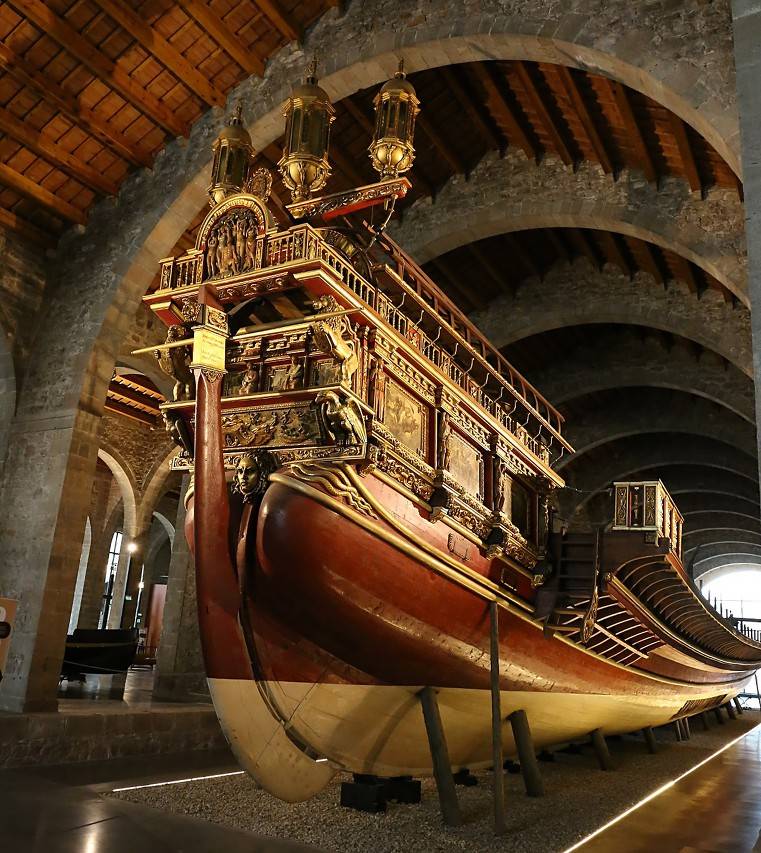
The Turkish galley of the early XNUMXth century, the oldest surviving to our time, is a unique exhibit of the Istanbul Maritime Museum:
At first, the Turks managed to damage the Real's main mast with a volley of their guns. Then the Sultana's bow ram broke open the side of the Spanish ship during the collision, and the crews of the ships met in a fierce battle. One after another, other ships entered the boarding battle. Among them was the galley Farnese, who then managed to capture one of the Turkish ships. As we remember, the Allies had an advantage in the number of boarding teams. For the Ottomans, this circumstance became fatal: they fought bravely, but could not win. Admiral Ali Pasha Muedzinzade died in battle, and one of the Spanish infantrymen planted his head on a pike. Don Juan fought like everyone else and was wounded in the leg.
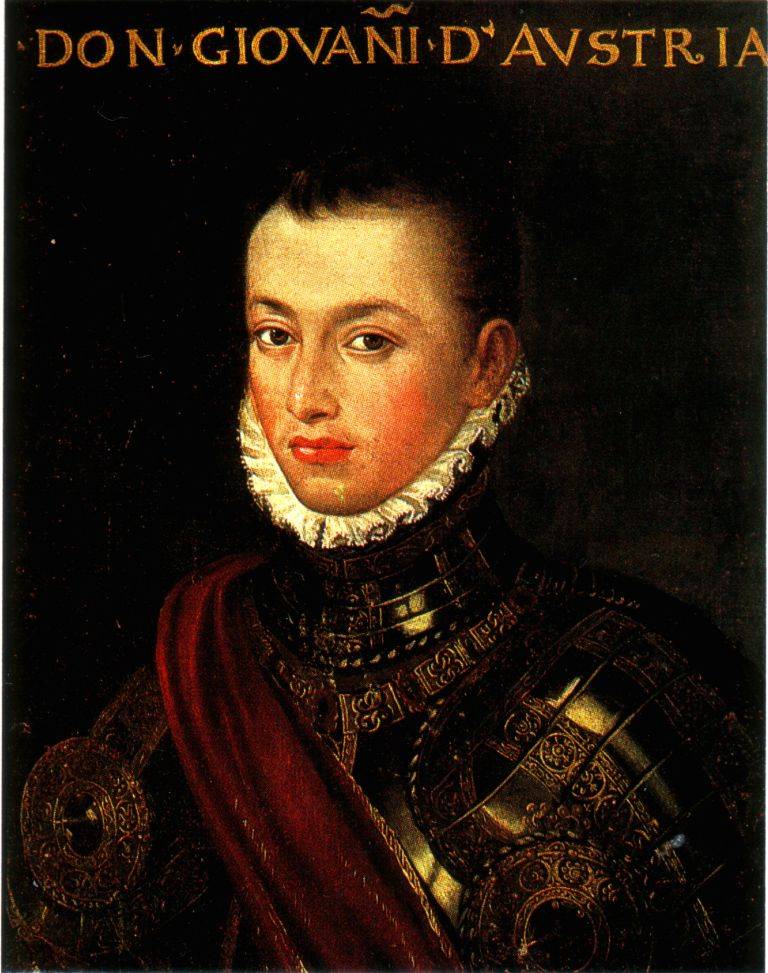
Juan de Austria, der Sieger von Lepanto. Portrait of an unknown artist, second half of the XNUMXth century
On the captured "Sultan", the Spaniards got the green banner of the Prophet Muhammad and the treasury of the Turkish fleet - 150 thousand sequins.
Unsuccessfully developed for the Ottomans and the battle on the right flank. Mohammed Sirocco decided to go around the European ships from the coast in order to attack them from the rear, but about 30 Turkish galleys ran aground. Panic began among their crews, people jumped into the water and tried to swim to the shore. Mohammed Sirocco died here and Agostino Barbarigo was mortally wounded. The Venetian raised his visor to inspect the battlefield, and at this time a Turkish arrow hit his eye. He died 2 days later. Later, his name was given to three warships of the Italian Navy.
Uludzh-Ali fought much more successfully. He managed to cut off Doria's squadron from the main forces, sink several enemy galleys, capture the flagship of the Knights of Malta and the standard of the Grand Master of the Hospitallers. Uludzh tried to come to the aid of Kapudan Pasha, but, realizing the scale of the disaster, he retreated, taking 40 galleys with him. He managed to find at sea and attach 47 more Ottoman ships to his squadron. He brought all these vessels safely to Constantinople. Here he received from the Sultan the title of admiral of the Turkish fleet and the title of "Kylych" (Sword).
Results of the Battle of Lepanto
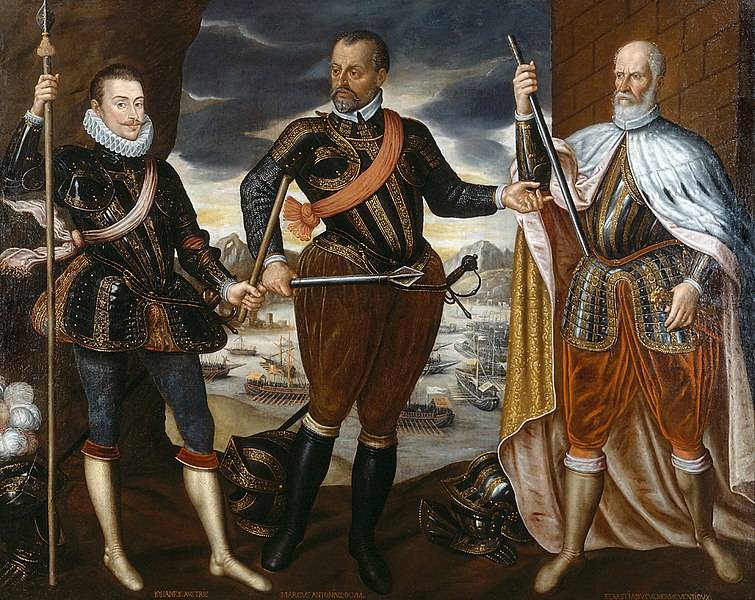
Winners at Lepanto in a painting by an unknown artist (1571): Juan of Austria, Sebastiano Venier, Marc Antonio Colonna. Kunsthistorisches Museum, Vienna
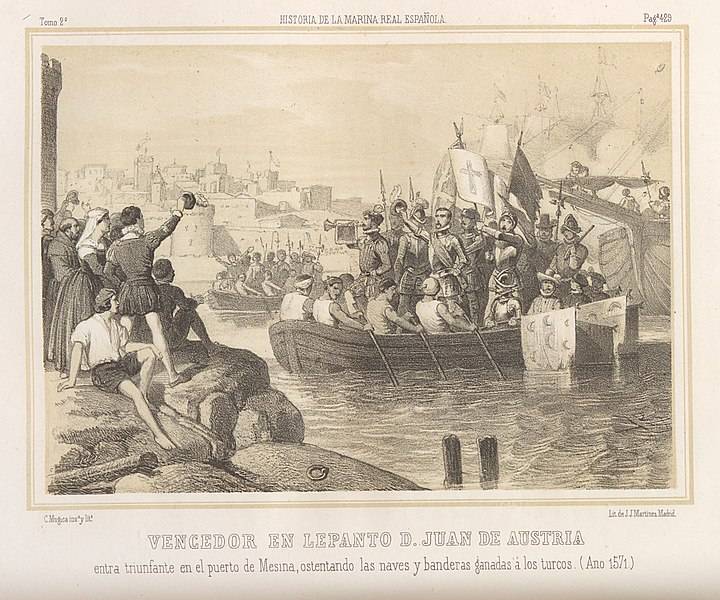
Return of Juan of Austria to Messina after the Battle of Lepanto
The total losses of the parties in the battle of Lepanto amounted to 35 to 40 thousand people - a figure for a naval battle is simply fantastic.
The Ottomans lost 227 ships (110 sunk and 117 captured), up to 25 thousand killed, about 3500 more Turkish soldiers and sailors were captured. About 12 Christians who served as rowers on the Ottoman galleys were released (and it is believed that up to 10 died on these ships).
European losses amounted to 13 ships and from 8 to 10 thousand people. Moreover, all the ships were lost in the battle against the Uluja-Ali squadron, most of the killed soldiers and sailors of the Holy League fell there. About 8 thousand people were injured.
However, the victory in that war remained with the Ottoman Empire. The main role here was played by two renegades - Uluj-Ali and Mehmed Pasha Sokkolu (Sokolovich).
The Grand Vizier of the Ottoman Empire was a Herzegovinian Serb, Bayo Nenadich, who, at the age of 14, was taken from his home under the “devshirme” system. Becoming a Janissary, he took part in the battle of Mohacs in 1526 and in the siege of Vienna in 1529. In 1541, the 36-year-old Mehmed became the head of the court guards of Suleiman I Kanuni (the Magnificent). In 1546, he replaced the famous Ottoman admiral Khair ad-Din Barbarossa, who had retired, as a kapudan pasha. Under three sultans (Suleiman I the Magnificent, Selim II and Murad III) for 14 years, 3 months and 17 days, he served as Grand Vizier. Barbaro Mehmed Pasha told the Venetian ambassador:
Instructing Uluj to build new ships, he said:
And Uluj perfectly seized the chance to modernize the Turkish fleet. On his initiative, the construction of large ships began on the model of the Venetian galleasses. Heavier guns were now placed on the galleys, Turkish sailors received firearms. weapon.
A year later, new Ottoman squadrons went to sea, and in 1573 the Venetians were forced to make peace, ceding Cyprus to the Turks and paying an indemnity of 300 thousand gold florins.
Thus, the battle of Lepanto can be compared with the battle on the Kulikovo field. They had no strategic significance for the victors, but they had a huge impact on the morale of the population of Russia and the countries of Catholic Europe. Numerous verses and poems were devoted to the victory at Lepanto. The author of one such work was the Scottish King James (son of Mary Stuart). However, this poem, written by him in 1591, was not liked by Jacob's compatriots: implacable Protestant preachers called their king "hired poet", glorifying"foreign papist bastard"(Juan of Austria).
After the battle of Lepanto, paintings were also created dedicated to the victory of the Christian army. Among them are two allegorical paintings by Titian, which were commissioned by the Spanish King Philip II:

Titian. "Philip II, after the victory at Lepanto, hands Don Fernando to Heaven." Prado Museum, Madrid
Moreover, a new Catholic holiday appeared, which in 1573 was named the Virgin Mary - the Queen of the Rosary.
And in 1572, a delegation of Albanians came to Juan, offering him to lead the fight against the Turks and become king. But you need to know what Albania was like in the second half of the XNUMXth century. Even Juan, who already dreamed of the throne of at least some country, did not dare to accept this offer. His half-brother Philip II fully approved of his decision.
Don Juan in Tunisia
After the collapse of the Holy League, in the summer of 1574, Selim II sent a squadron of 300 ships to the shores of North Africa. The 40th Ottoman army captured the city of Tunisia and destroyed the Spanish garrisons in the fortresses of La Guetta and Al Bastiun. Juan of Austria managed to recapture Tunisia and destroy Bizerte. The ambitious bastard even made plans to create his own Christian kingdom here - on the model of the states created once by the crusaders in Palestine. Pope Gregory XI supported his claims. However, Philip II reacted coldly to Juan's plans and not only refused to help, but even ordered the troops to be evacuated and the walls of Tunisia to be demolished. He then threw all his forces into the Netherlands, trying to keep this troubled province in obedience, which his father Charles declared the personal possession of the Habsburgs.
Later, Philip II did not support another adventurous plan of an enterprising bastard who planned to kidnap the captive of the English queen, Mary Stuart, and marry her. Instead, he appointed Juan Vicar General of Milan, Naples and Sicily. Relations between half-brothers - King Philip and Juan of Austria, were getting worse.
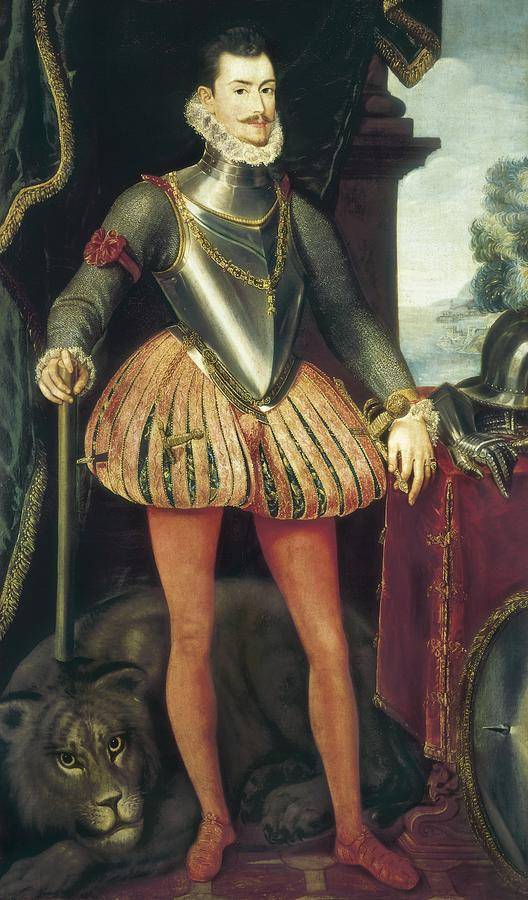
Another portrait of Don Juan of Austria by Alonso Sanchez Coelho
Don Juan in the Netherlands
Historians note that at this time the character of Juan of Austria changed for the worse. Ambition, arrogance and envy now came to the fore. He was annoyed by the presence of a "thin" mother, who, he believed, compromised him and interfered with plans to become the reigning monarch. He even planned to lure her to Spain and imprison her in one of the monasteries. However, in Spain the winner at Lepanto was still popular.
In 1576, Philip II decided to appoint the annoying brother to the post of royal governor of the Netherlands. There he was to replace the Duke of Alba. The situation in this remote, rebellious province was very difficult. The "Spanish road" of the Habsburgs was practically non-functional, and it was now difficult to even get to the Netherlands: the sea route was dangerous due to the actions of the British and Geuzes, the land route lay through hostile France. As a result, Juan had to get to his destination incognito - hiding his name. Due to logistical problems, the Spanish troops here were already doomed. Their final evacuation was only a matter of time.
The situation became more and more alarming. On November 8, 1576, even before the arrival of Juan, in Ghent, the Catholic and Protestant regions of the Spanish Netherlands came to an agreement on the need for the withdrawal of Spanish troops from the territory of the province. Only under this condition did they agree to recognize Juan as governor. In January 1577, don Juan was forced to sign the Union of Brussels, which guaranteed the restoration of the rights and liberties of the Netherlands and the approval of the Prince of Orange as the Stadtholder of Holland and Zeeland. It was possible to achieve only guarantees of the dominant position in the Netherlands for Catholicism. After that, don Juan was generally well received in Brussels, but his unwillingness to withdraw Spanish troops from the Netherlands led to a new aggravation of the situation.
Don Juan continued to make far-reaching plans, which were now one more fantastic than the other. He considered the possibility of an alliance with the Duke of Guise, through whose help it would allegedly be possible to seize the throne of Spain, forcing the weak and sickly Philip II to abdicate. He dreamed of either freeing Mary Stuart, or marrying Elizabeth of England. He was going to organize an assassination attempt on William of Orange, but could not find the executor.
Finally, Philip II himself ordered the evacuation of Spanish troops from the Netherlands. But this did not suit Juan at all. In July 1577, his army of 22, advancing from Luxembourg, occupied Namur and Charlemont. This led to the final unification of the Catholics and Protestants of the Netherlands, and the States General demanded that Philip II recall Juan. Margarita of Parma was appointed in his place, but it was too late. In January 1578, Juan arbitrarily sent troops into the Netherlands, defeating the rebels at Isemble. After that, he occupied Flanders, Brabant and Bennegad, but he did not have enough strength to advance further. Having sent a letter to Philip II asking for help, he stationed his troops in a camp near Namur.
William of Orange at that time was gathering his army, commanded by General Bosso. She was supposed to be helped by detachments of German Protestants, gathered with money allocated by England. The French were also ready to intervene. The small Spanish army was pinned down on all sides. To prevent Bosso from linking up with the Germans, Juan attacked his army at Rimenan, but was defeated.
At this time, an epidemic of some kind of disease began in the Spanish camp, which the chroniclers traditionally called the plague. Among her victims was the hero Lepanto, who had become useless to anyone. Juan of Austria died before the age of 32 on October 1, 1578. His grave can be seen in Escorial.
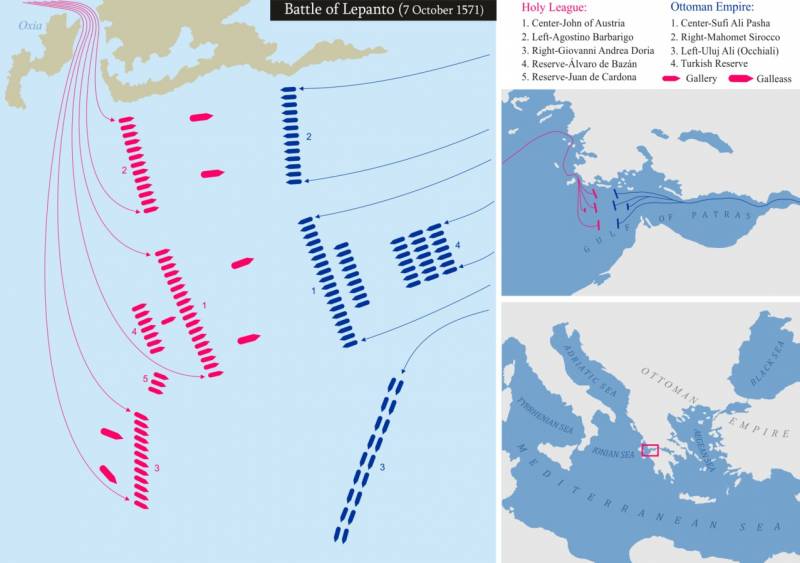
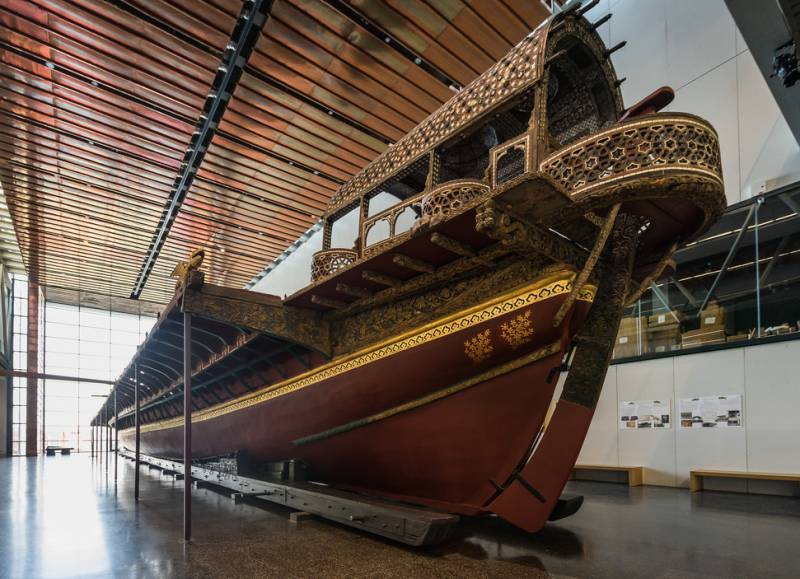
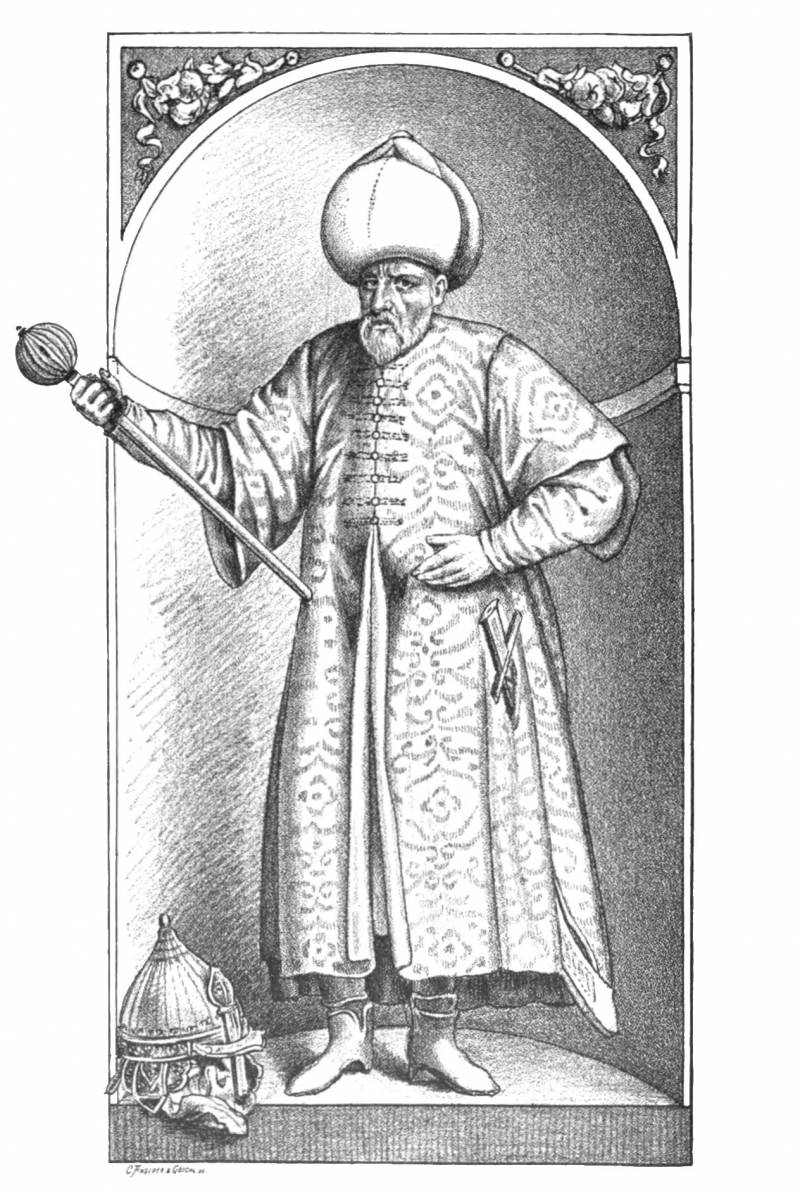
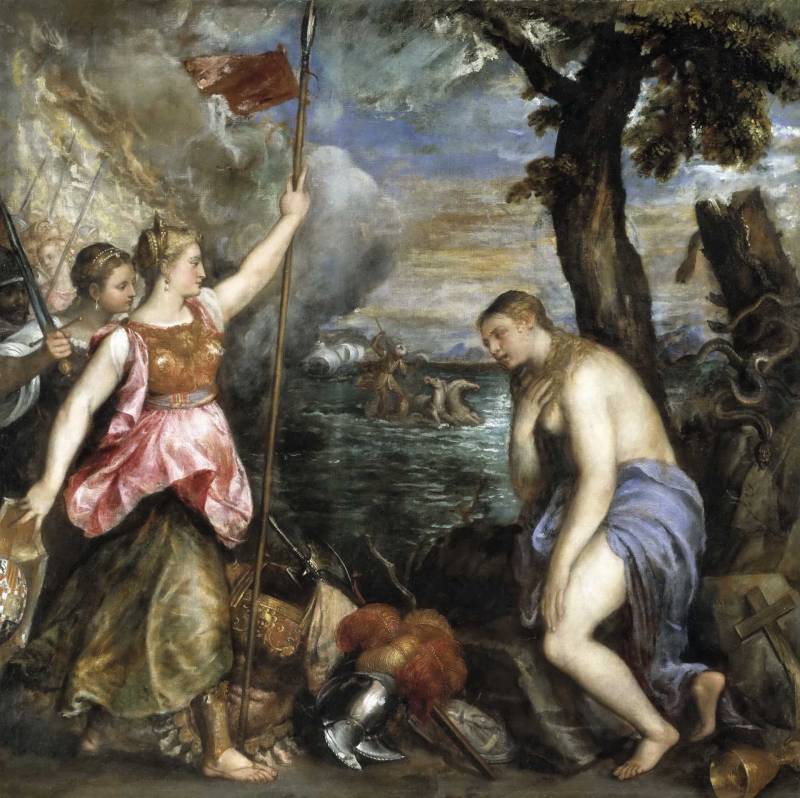
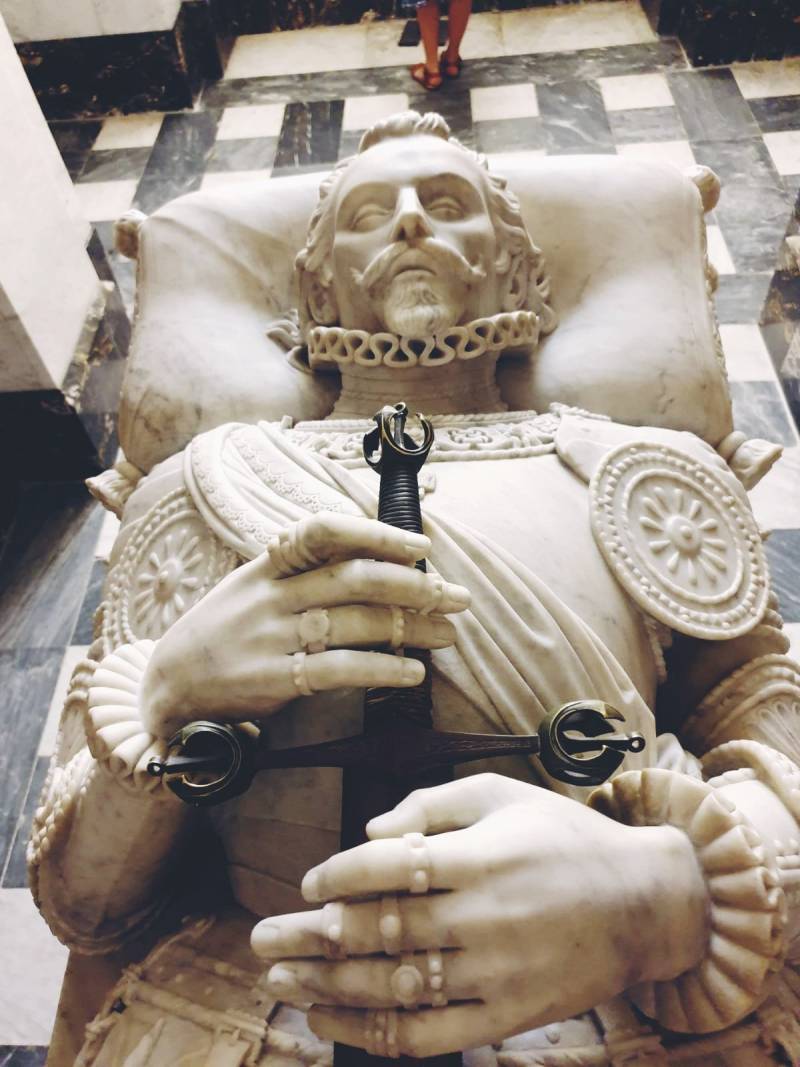
Information